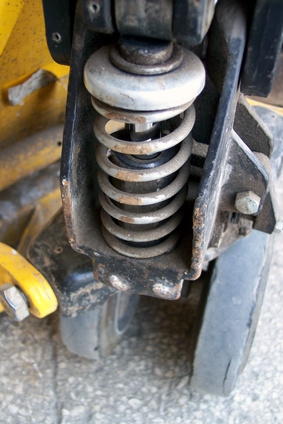
A vehicle's suspension has a direct effect on ride comfort, handling and height. MacPherson struts suspension uses a simple shock absorber design. Coilover suspension offers ride height and cornering adjustment for performance-oriented drivers.
Vehicles ranging from compact cars to sport utility vehicles come with MacPherson struts suspension because of the simplicity. Struts use a spring and shock absorber, which pivots on a control arm ball joint. Coilovers replace struts. Coilovers feature a spring centered on a gas-filled, adjustable dampening system, which connects to the control arm.
Adjustability is a major reason people install coilovers. The dampening system has a specific range of spring rate settings depending on model; ranging from semi-soft to extremely hard. A stiff spring rate improves cornering by reducing body roll and increasing traction. Setting a lower ride height is another advantage of coilovers. Lowering a vehicle lowers the center of gravity reducing body roll, which improves handling. Struts cost less than coilovers and offer a more comfortable ride.
Struts don't have the same level of adjustability as coilovers. Drivers interested in a higher level of cornering will not be able to adjust the spring rates or ride height when using struts. Coilovers often reduce ride comfort as a trade off for improved handling.